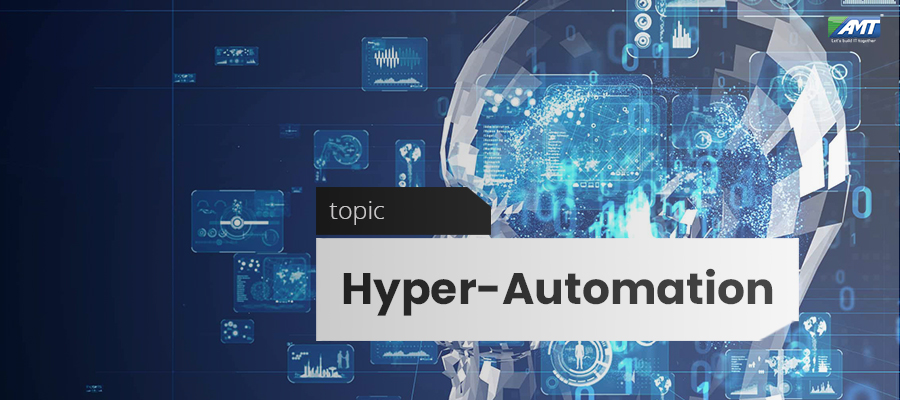As defined by Gartner, hyper-automation “deals with the application of advanced technologies, including artificial intelligence (AI) and machine learning (ML), to increasingly automate processes and augment humans. Hyper-automation extends across a range of tools that can be automated, but also refers to the sophistication of the automation (i.e., discover, analyse, design, automate, measure, monitor, reassess.)â€
When automation moved to the forefront of most industries, many businesses felt reluctant to implement this new technology. Rather than focusing on the immensely broad and undeniable benefits of utilising automation for business process improvement, business leaders feared change and employees worried about losing their jobs. However, with the progression in automation technology, trends like hyper-automation are growing, meaning that businesses are now shifting their practices towards creating “people-centric smart workplaces.â€
In simple terms, hyper-automation refers to the mixture of automation technologies that exist to augment and expand human capabilities.
How is Hyper-automation Different from Regular Automation?
When we think of automation, terms like robotic process automation come to mind. But, hyper-automation takes an ecosystem of technologically advanced tools and combines them to create a new way to work.
It means that low-value tasks are optimally performed with automation tools, machine learning and advanced artificial intelligence so that outputs can be produced automatically and run efficiently with little to no human intervention. Then, together with humans, hyper-automation can create a workplace that is always informed, agile and able to use data and insights for quick and accurate decision-making.
The benefits of hyper-automation will allow your workforce to be educated with the latest business and marketplace information so that they can perform their roles optimally.
Rather than being bogged down by low-level, repetitive tasks, your workforce will remain engaged with their jobs as they seek to resolve problems and provide creative solutions.
Hyper-automation provides your business and its leaders with:
- Automated processes
- Advanced analytics
- Increased employee satisfaction and motivation
- An educated workforce
- Increased employee capacity
- Instant and accurate insights
- Greater compliance and reduced risk
- Greater productivity
- Increased team collaboration
Hyper-automation does not just refer to implementing tools to manage tasks. It requires collaboration between humans, as well. This is because humans are vital decision-makers and can use the technology to interpret data and apply logic.
For example, let’s imagine the case of social media and customer retention. A business can rely on tools that leverage RPA and machine learning to produce reports and pull data from social platforms to attain customer sentiment. As such, reports will be generated, and there will be information readily available for the marketing team. But, it will then require that the marketing team uses these insights to consider what type of campaigns, promotions and incentives to incorporate into a business plan to hold onto satisfied customers and attempt to salvage those who feel dissatisfied.
Hyper-automation goes beyond just one piece of software. As such, it entails that businesses adopt tools that can be set up to work with one another. The case for interoperability, or the ease at which software can communicate with one another, is now more critical than ever.
Not only will you want single software solutions that are easy-to-use and scalable, but you will also need to consider how the addition of a tool will work with your existing methods of operating. You’ll want to introduce tools that are “plug and play†solutions, which can pull data from different sources and can use APIs to talk to your existing software.
Hyper-automation makes sure financial teams have their data up-to-date and centralised instantly. With RPA, low-level tasks are managed automatically, and financial organisations can spend more time offering strategic decision-making advice with insights gleaned from automated reports. It improves accuracy and enables CFOs to have live-data reporting, to identify risks and opportunities immediately and enable fast decisions using the most current data.
With less time on low-value manual tasks, employees can carry out more strategic work increasing employee satisfaction, motivation and output.
Given the vast amounts of data that finance teams work with daily, security and accessibility are vital components of daily operations. Hyperautomation relies on secure tools that inherently provide audit trails and access to only those who should have it.
Automation and artificial intelligence will continue to augment how people work moving forward, so it pays to invest wisely in these types of tools.
The above is a brief about Hyper-automation. Watch this space for more updates on the latest trends in Technology.
